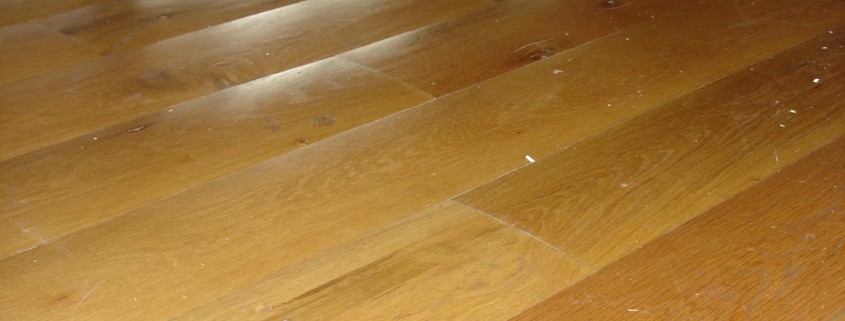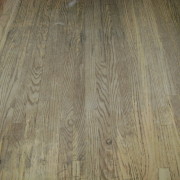Water Damaged Wood Floor
I’ve lived in Boulder my whole life, and I’ve never seen anything like the rain and flooding we’ve experienced this past week. It’s devastating! So many residences and businesses have been adversely affected by the deluge of water we received. After many have cleaned up the mess that was caused by the water, they may find their wood floor has water damage, namely cupping. Wood and water are not a good combination. When humidity increases, the moisture content in wood goes up, and the wood expands. What are the options when your hardwood floor has gotten wet?
Well, it really depends on the amount of water that got on or under your floor. If there is minimal damage, you may be able to dry out the floor using large fans and a dehumidifier (the dehumidfier is best used if put under the subfloor of the affected area in a crawl space or basement). Unfortunately, if the wood got too wet, the best option is to tear out the damaged section, dry out the subfloor, and once the moisture level is lowered, reinstall new wood.
Properly drying out a wood floor may take a few weeks to a few months. The more moisture that is under the wood in the subfloor, the longer it will take to dry out. When there is moisture in the subfloor, you’ll see cupping of the wood floor. If you have a company sand and finish the moisture damaged wood before it is completely dry (we use moisture meters to tell us the moisture level), you can create a worse problem.
The best option is to have an experienced wood floor company come out and assess the situation. Make sure the company knows what they are doing, and that they use moisture meters to measure how much moisture is in the wood and subfloor.
You can give us a call or email with questions or to schedule a free estimate or consultation.








